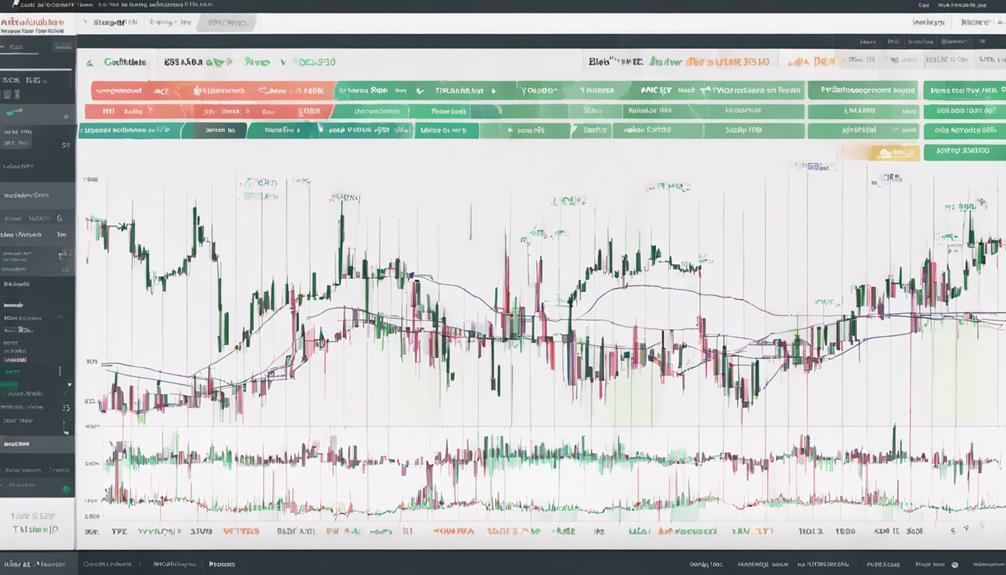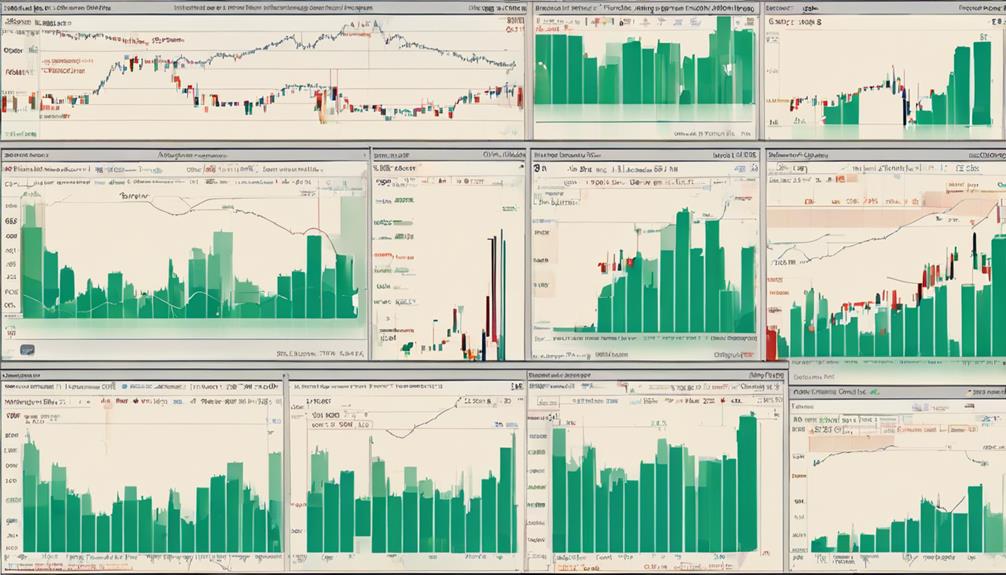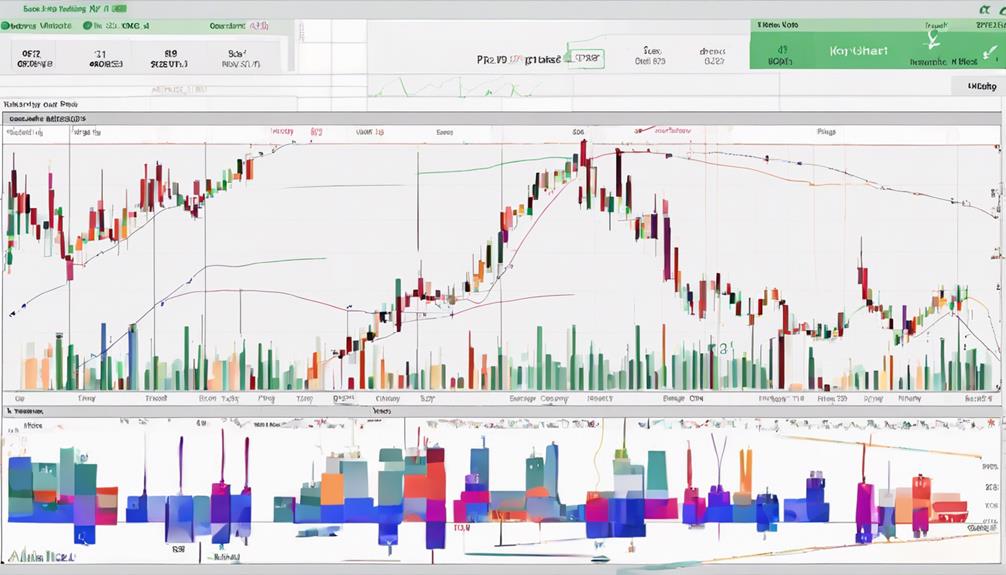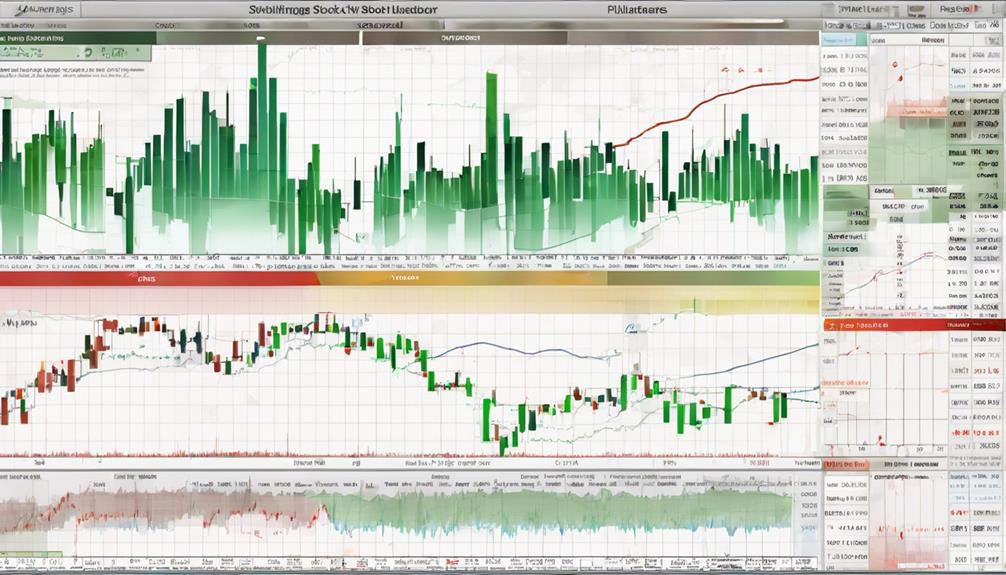In the fast-paced world of trading, understanding volatility indicators can be a game-changer. By honing in on these metrics, traders can potentially unlock new opportunities and refine their strategies to adapt to market fluctuations.
The ability to predict and capitalize on volatility shifts is a skill that sets successful traders apart, but the process involves much more than mere observation. It requires a deep understanding of the nuances of various indicators and the strategic implementation of this knowledge.
As we explore the intricacies of leveraging volatility indicators, we uncover a world of possibilities that could reshape your approach to trading.
Leveraging Historical Volatility Data
Utilizing historical volatility data provides traders with a quantitative framework to gauge the past price fluctuations of a financial asset accurately. Historical volatility data, often calculated using metrics like the Average True Range (ATR) or standard deviation, offers traders insights into the level of price fluctuations experienced by an asset over a specific period. By analyzing historical volatility, traders can better understand how much an asset's price has deviated from its average price historically, aiding in the development of effective trading strategies and risk management techniques.
Traders use historical volatility data not only to assess past price movements but also to gain potential insights into future price fluctuations. Understanding how an asset has behaved in the past can equip traders to anticipate potential price changes, adjust their trading strategies accordingly, and make informed decisions in the dynamic market environment. By leveraging historical volatility data, traders can enhance their market analysis, improve risk management practices, and strive to achieve more consistent trading results.
Utilizing Implied Volatility for Trading

Implied volatility serves as a key metric for traders seeking to assess market sentiment and anticipate potential price movements based on options pricing dynamics. When utilizing implied volatility for trading, here are some crucial points to consider:
- Market Sentiment Gauge: Implied volatility reflects market expectations of future price changes, providing insights into sentiment levels.
- Price Movement Prediction: Traders use implied volatility to predict potential price swings, especially in times of uncertainty.
- Premium Impact: Options with higher implied volatility tend to have increased premiums due to the higher levels of uncertainty priced in.
- Decision Making: Understanding implied volatility aids traders in making informed decisions regarding option strategies and risk management, helping to navigate the market effectively.
Implementing Relative Volatility Index Insights

Given the importance of understanding market sentiment and anticipating price movements through implied volatility analysis, transitioning to implementing Relative Volatility Index (RVI) insights can provide traders with additional tools to assess momentum and potential trend reversals in the market.
The RVI, functioning as a momentum oscillator, evaluates the speed and direction of price movements, aiding traders in identifying overbought and oversold conditions. RVI values exceeding 70 indicate overbought levels, while values below 30 signify oversold levels, signaling potential trend reversals.
By incorporating RVI crossovers with signal lines, traders can receive buy or sell signals, enhancing their trading strategies. Integrating the RVI into a comprehensive trading approach offers valuable insights into market volatility and trend strength.
Utilizing RVI insights can assist traders in making informed decisions and adapting their strategies based on dynamic market conditions, ultimately improving their ability to navigate the complexities of the financial markets.
Interpreting Volatility Indicator Readings

Volatility indicators play a crucial role in assessing market sentiment and predicting potential price movements, providing valuable insights for traders to make informed decisions. When interpreting volatility indicator readings, traders should consider the following:
- High Readings: High readings on volatility indicators signal increased market uncertainty and the likelihood of significant price swings, indicating a more volatile market environment.
- Low Readings: Conversely, low readings on volatility indicators suggest calmer market conditions with less expected price movement, indicating a period of relative stability.
- Interpret Readings: Understanding how to interpret volatility indicator readings can assist traders in making informed decisions about when to enter or exit trades based on the expected market volatility levels.
- Market Volatility Levels: Volatility indicator readings provide insights into the current market volatility levels, helping traders adjust their strategies accordingly to navigate the market with greater precision and confidence.
Enhancing Trading Strategies With Volatility Indicators

Enhancing trading strategies with volatility indicators involves leveraging key market insights to optimize decision-making processes and capitalize on potential price movements.
Volatility indicators like Bollinger Bands and Average True Range (ATR) provide valuable information about market sentiment and expected price fluctuations.
Implied volatility indicators, such as the VIX, offer insights into future volatility expectations, guiding traders in adjusting their strategies accordingly.
Understanding the mathematical workings of these indicators helps identify high and low volatility periods, enabling traders to adapt their approaches based on prevailing market conditions.
Frequently Asked Questions
How Do You Profit From Volatility?
To profit from volatility, traders can leverage options strategies, trade VIX products, utilize stop-loss orders, and monitor indicators like VIX and Bollinger Bands. Diversify strategies, adjust positions based on volatility, and adhere to a disciplined trading plan for success.
How Do You Profit From Volatility Crush?
To profit from volatility crush, traders can sell options before the anticipated decline in implied volatility. Timing is crucial as volatility crush leads to decreased option prices, benefiting sellers. Strategies like selling straddles or iron condors pre-crush can optimize gains.
Is Volatility Trading Profitable?
Volatility trading can be profitable when approached strategically. Understanding volatility indicators aids in capitalizing on market swings for profits. Risk management, like stop-loss orders, is essential. Utilize tools such as VIX options to navigate market volatility effectively.
How Do You Interpret Volatility Results?
Interpreting volatility results involves analyzing historical and implied indicators like ATR, Bollinger Bands, and VIX. Historical volatility indicates past price movements, while implied volatility forecasts future price changes based on option prices, aiding in strategic trading adjustments.
Conclusion
In conclusion, the utilization of volatility indicators in trading strategies can significantly enhance profit potential by capitalizing on market movements and shifts.
By leveraging historical and implied volatility data, interpreting volatility indicator readings, and implementing sound risk management practices, traders can navigate volatile markets successfully.
As the saying goes, 'In the midst of chaos, there is also opportunity.' Therefore, mastering volatility indicators is essential for optimizing trading outcomes and maximizing profits in fluctuating market conditions.
